Get branding tips and expert advice delivered straight to your inbox.
Adobe released a digital asset management system (AEM Assets) back in 2021 as an addition to its expansive ecosystem of software solutions. There was immediate interest in the product, as Adobe is a household name (and most businesses are already using one or more of their software). But Adobe’s DAM caters to a pretty specific set of users, and most organizations find Adobe’s DAM too expensive or otherwise unattainable.
So in this post, we talk about Adobe’s DAM, its pros and cons, and who we recommend the product for. Then, we’ll talk about Brandfolder and explain how our highly-configurable, scalable DAM can be customized to support a wide variety of business needs.
You can schedule a demo of Brandfolder to learn more about our DAM and talk with our team about your requirements for digital asset management software.
Adobe Experience Manager: Pros, Cons + Insights from User Reviews
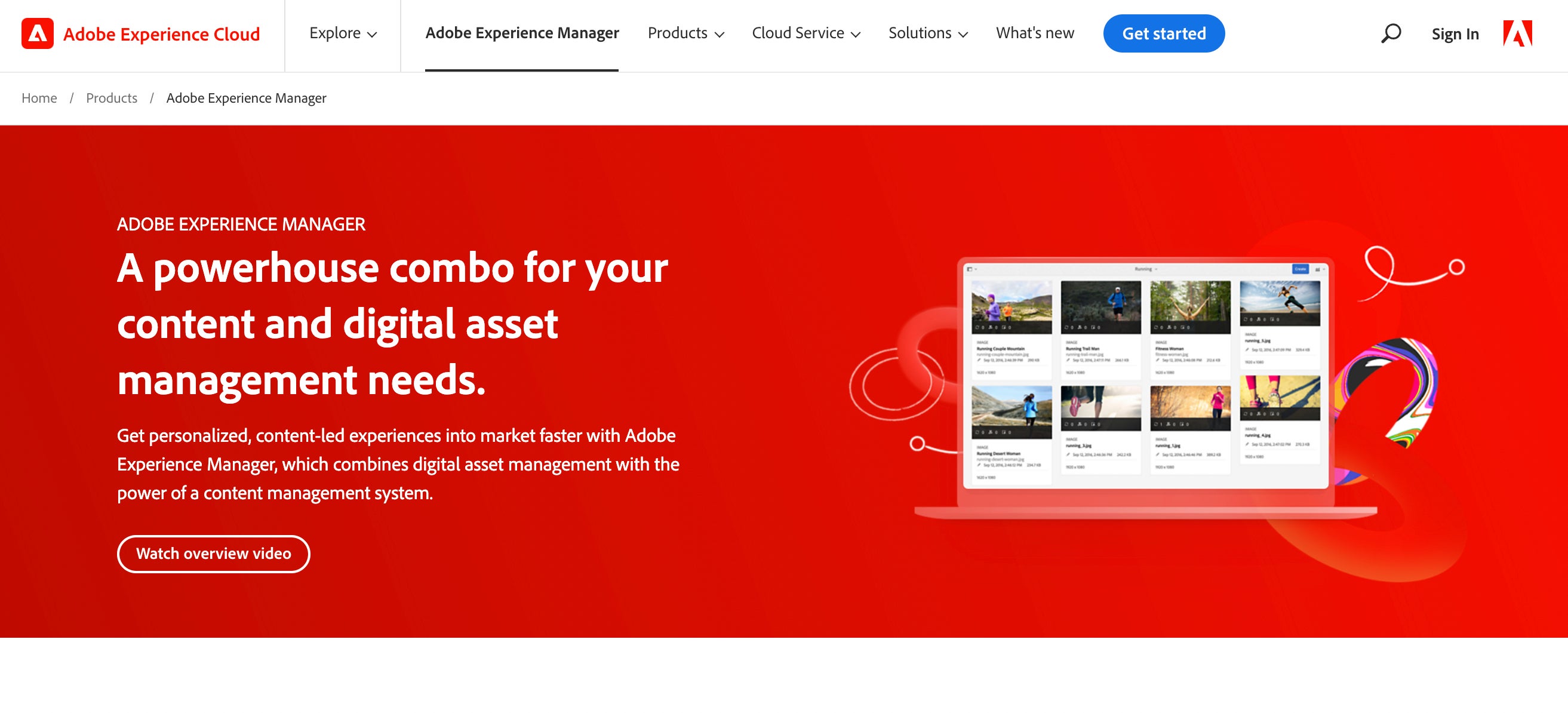
Adobe Experience Manager is most popular amongst large-scale creative teams or digital marketing agencies that are power users of Creative Cloud (or operate primarily in the Adobe ecosystem) and want DAM software to promote smoother internal collaboration. These users benefit from AEM because they can organize brand assets, manage and streamline creative workflows, and empower team members to work together in one hub.
Teams like Adobe because:
- It has strong integrations with Creative Cloud applications (Adobe Photoshop, InDesign, Illustrator) and other Adobe software products.
- It integrates with Adobe’s content management system (CMS) so you can build websites off of AEM and integrate with Adobe Analytics.
- It has scaled automation features like bulk ingestion and metadata analysis so you can work with a high volume of assets at once. It also has automatic digital transformation tools to optimize assets on the fly.
- Adobe is a trusted brand name so most already have some familiarity with their products.
AEM caters to Adobe-centric creative and marketing teams really well but it’s not the right option for every business.
Considering our recommendation above, Adobe is not the best digital asset management solution for teams that:
- Have a mixed tech stack and need DAM software with flexible integrations.
- Manage a wide variety of file types and need DAM software that can accommodate less common file formats (like 3D models).
- Frequently collaborate with external teams and need easy features to send/receive assets and monitor file sharing.
Chief complaints with Adobe’s digital asset management software include:
- Limited integrations: AEM works seamlessly with other Adobe products, but it’s arguably too “Adobe-focused,” and lacks integrations with other software.
- Not as flexible with file type so you can’t preview certain files in the DAM.
- External sharing is challenging, you only have a few features at your disposal, and keeping track of sharing can get messy.
- AEM is difficult to deploy and involves heavy resourcing from IT — on average, implementation and onboarding can take around 12 months.
- The user experience isn’t the best or most modern — features aren’t super intuitive and training takes time. Teams can’t just jump aboard and start using AEM on day one.
Not to mention, Adobe has super expensive pricing options — it’s probably one of the most expensive DAMs available — so most SMBs are priced out of the conversation early because they can’t afford AEM’s licensing fees (let alone the extra fees to customize AEM, or the resources to deploy the software).
On that note, it’s not uncommon for teams to get “locked in” with Adobe. They have a super robust ecosystem of software solutions (over 90+ products!). So if AEM doesn’t integrate with a tool you’re already using, or you need extra functionality, you’re usually stuck purchasing one of their solutions to supplement. And this can add up.
In summary: Adobe AEM makes sense for enterprise creatives and marketing teams that have the budget and resources to afford the software, and are already running everything off of Adobe. However, teams that need more flexibility should choose a customizable DAM system (like Brandfolder) and integrate it with the other software in their tech stack.
But before we talk about our DAM solution, Brandfolder, let’s touch on some customer reviews of Adobe’s product so you can see feedback from current users.
Overall, Adobe Experience Manager Assets is rated **3.8 stars on G2** and **4.3 stars on Capterra**. When we look at a breakdown of reviews, we see Adobe scores:
- 7.2 for Ease of Use
- 7.1 for Quality of Support
- 6.5 for Ease of Setup
Here’s a look at some of the recent reviews for Adobe Experience Manager:
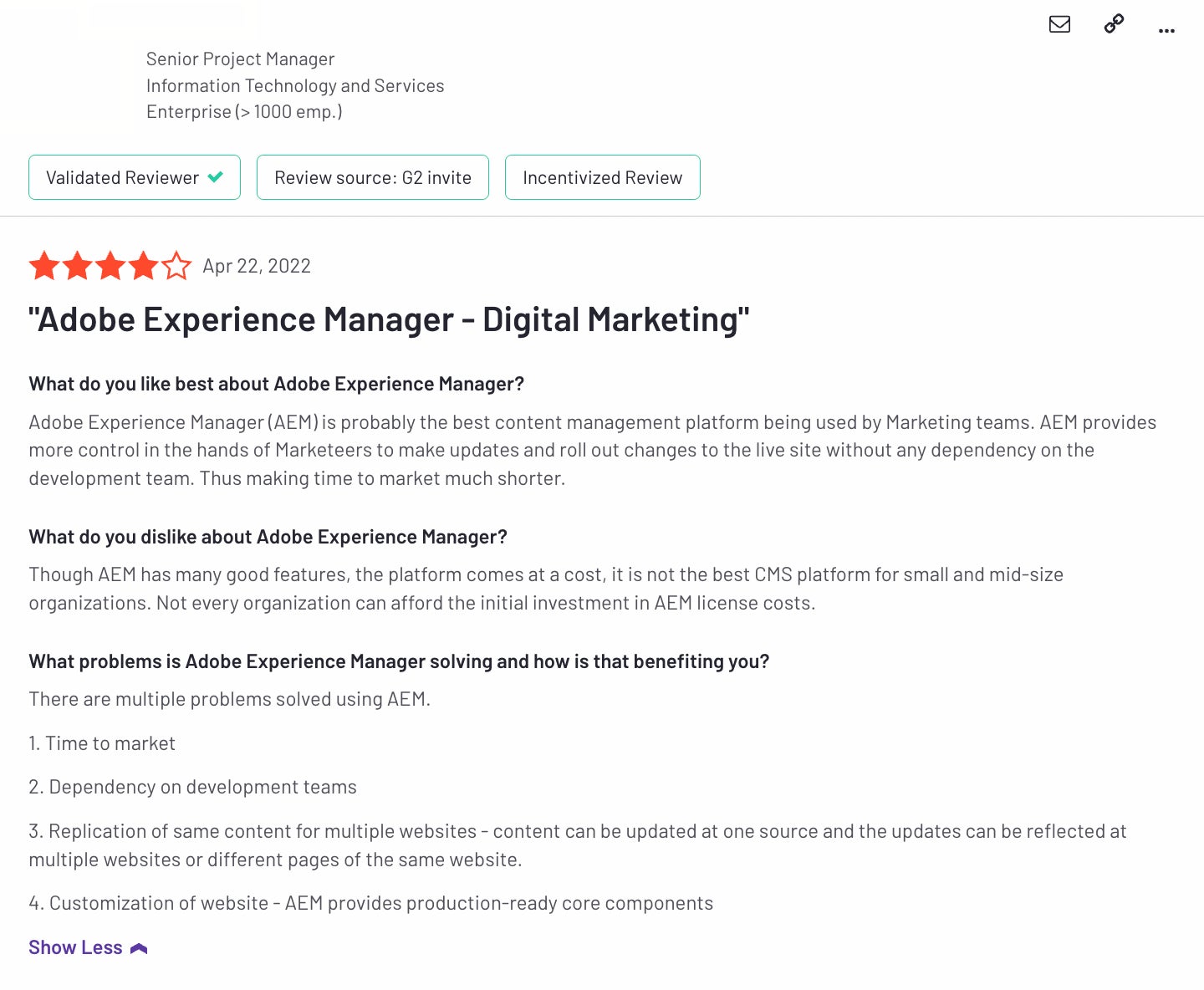
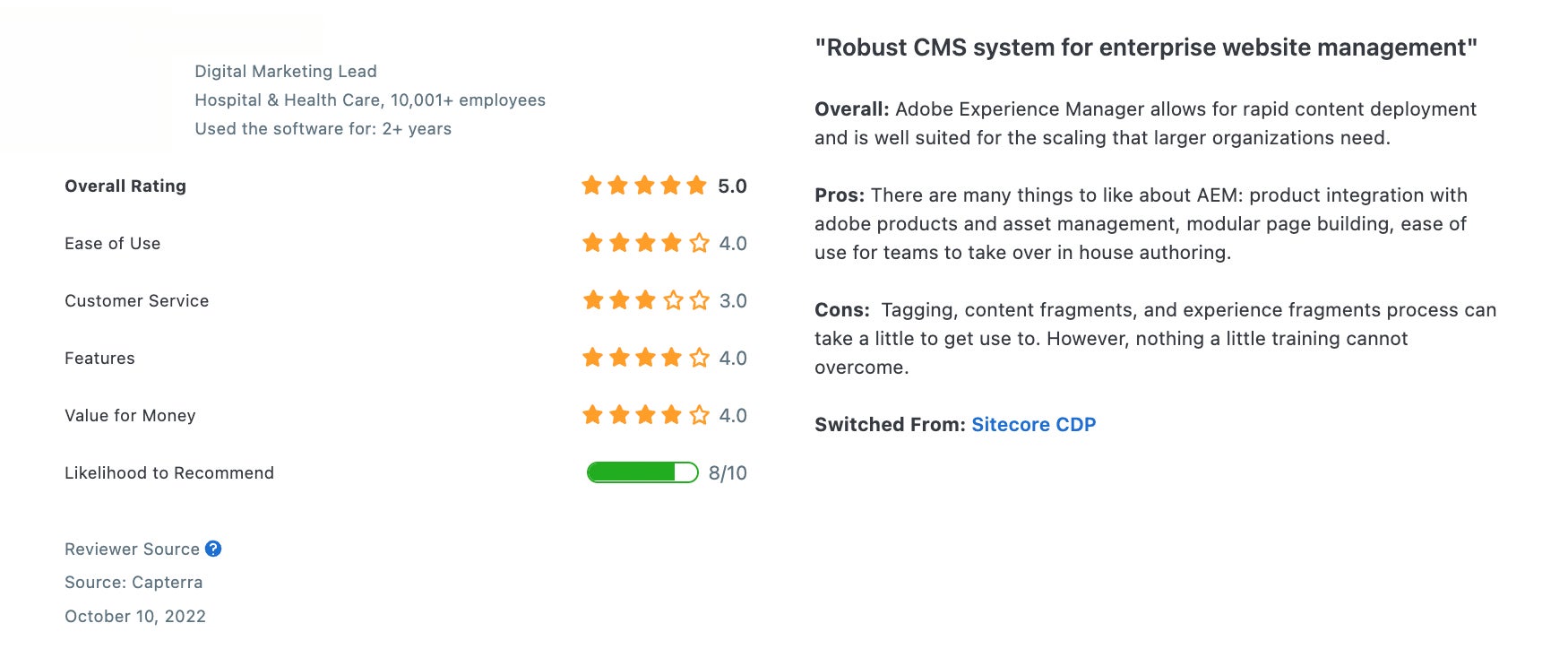
You can also read our review of top-rated digital asset management software products here.
Brandfolder Digital Asset Management: A Flexible DAM to Accommodate SMBs & Enterprise Teams
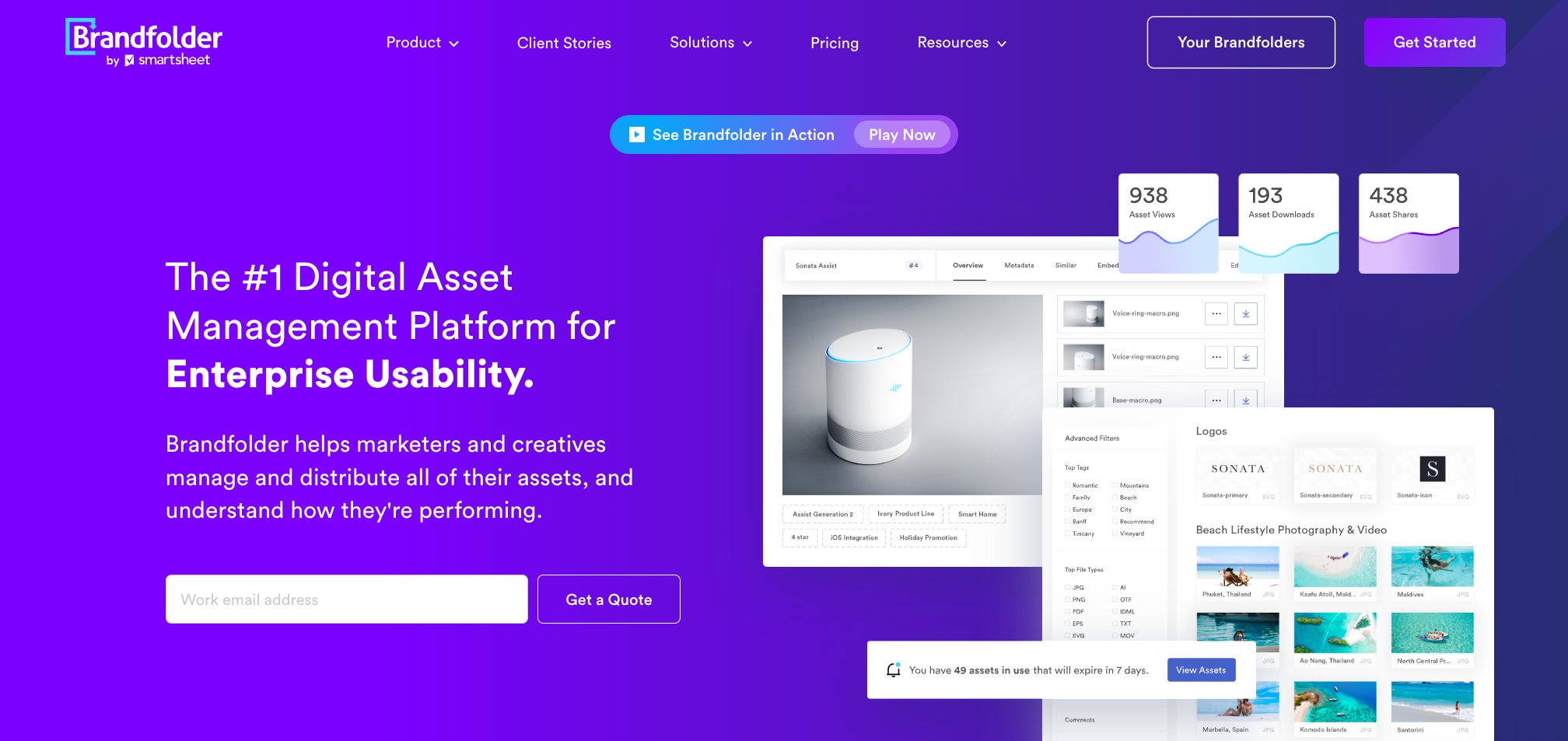
Brandfolder is a popular digital asset management software because our DAM is highly flexible and scalable, and we have a dedicated customer experience team to help you configure Brandfolder for your current needs, move through onboarding and implementation without hiccups, and optimize the software as your business needs change.
Here’s how it works:
- You choose storage space, user seats, integrations and add-on features before setup, then we put together a plan to tackle migration and onboarding.
- Our team is available to guide you through each phase of onboarding, from importing and organizing digital assets to setting up integrations. Most **teams can fully deploy Brandfolder in two months**. We have tiered support and onboarding services so you can decide how involved you want us to be.
- You can modify Brandfolder as you go — you can add more storage, adjust seats, and update integrations so your DAM evolves with your business.
Our DAM has advanced functionality that makes it easy to store, organize, distribute (and otherwise manage) all of your brand assets — including everything from design files to RAW images and 3D models.
Our features are all user-friendly so there isn’t a steep learning curve when you get started. And our integrations let you connect the DAM with any other tool in your daily operations and use Brandfolder as a single source of truth for all brand assets.
Our flexibility and DAM integrations allow us to design solutions for small, mid-size and enterprise teams across industries like marketing, design, finance, healthcare, retail, manufacturing, CPG, food & beverage and other professional services.
Read more: 10 Digital Asset Management Best Practices From DAM Experts
Let’s review our core features.
Brandfolder DAM Features
Brandfolder has essential features like cloud storage, online sharing and reporting, but we also have advanced extras like content automation, Brandguide, and Workspace.
**Secure cloud storage for all brand assets:** Brandfolder accepts hundreds of file types and formats so you can centralize brand assets instead of relying on supplemental storage drives. Then, you can preview and work with any file before downloading or exporting it.
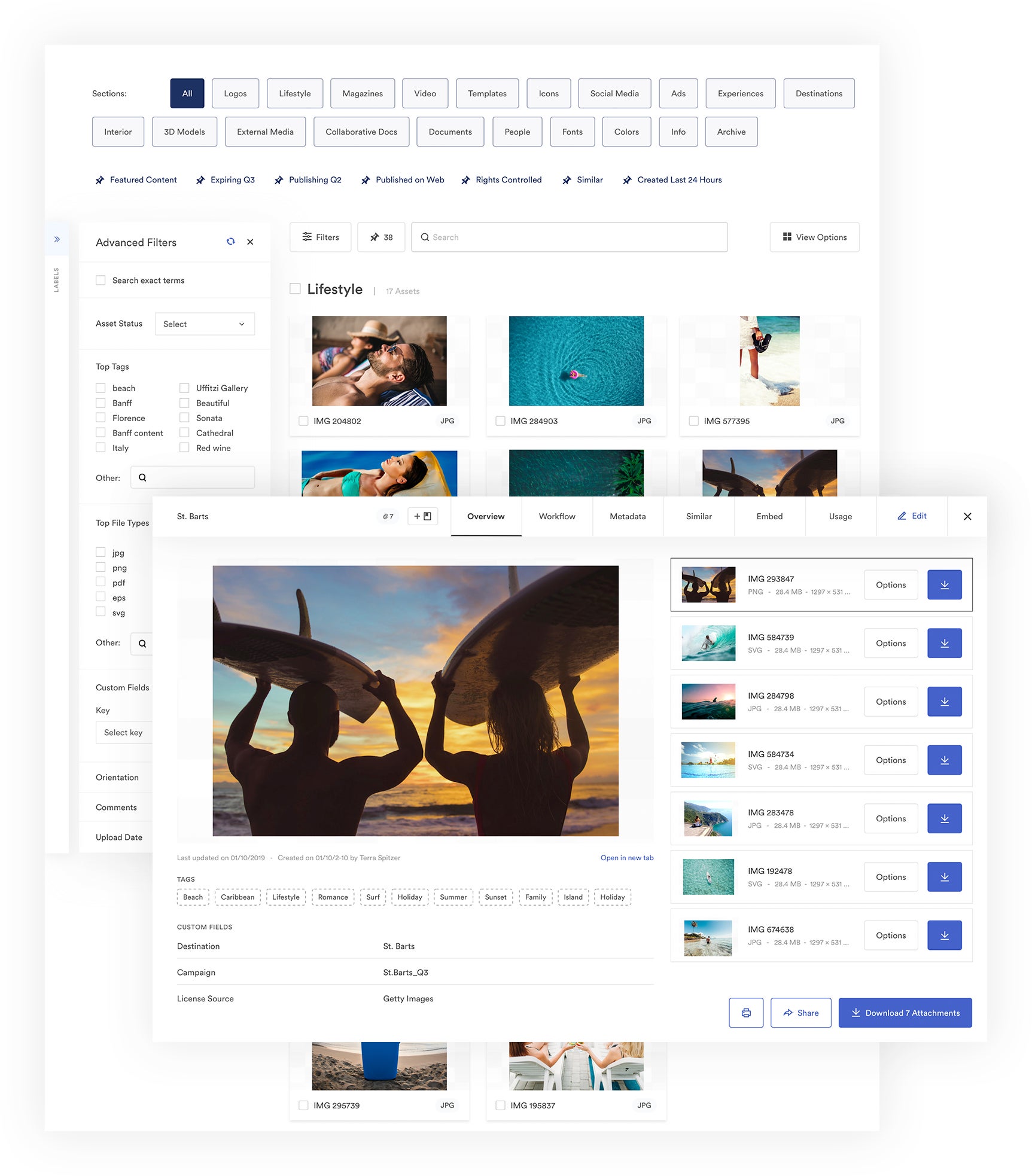
Brand Intelligence to automate metadata tagging and power search and discovery: Machine-learning AI analyzes your DAM taxonomy to automatically organize assets and add the right metadata and tags. It learns with your tagging habits to apply more product and brand-specific metadata. Then, when you do a search in Brandfolder, AI scans all extracted metadata to pull assets that relate to your query.
Online sharing features to send assets to team members and external collaborators: User permissions let you add others to Collections and Brand Portals and assign everybody a role (Admin, Collaborator or Guest). We provide custom share links and free guest seats so you can share digital assets with people outside of your organization without extra fees.
Digital transformation tools and content automation: We also have features that enable non-creatives to transform and repurpose brand collateral inside the DAM system. You can convert and resize assets, crop assets, trim videos, make clips and GIFs or use content automation to create new collateral from templates.
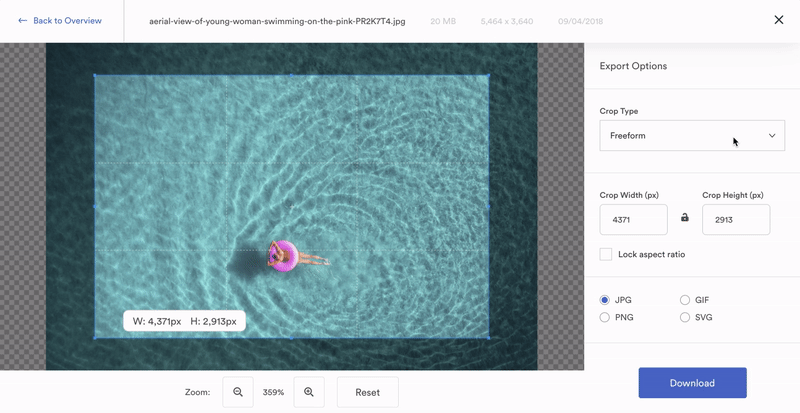
Brandguide: The Brandguide feature keeps everybody on the same page by providing a portal to publish all brand guidelines. You can add rules for asset usage and online publishing, digital rights information, background on the brand history and any other notes you deem relevant to maintaining brand consistency amongst your users and projects.
**Workspace:**Workspace is a native project management dashboard where users can work together on digital projects. It lets you easily manage new creative requests and facilitates collaboration across teams so you can track the entire content lifecycle — from creation to expiration — in the DAM. Not to mention, Brandfolder partners with Smartsheet so we have a strong PM integration that provides more robust project management capabilities in the DAM.
Smart CDN and web-to-print features: Brandfolder also has a native content delivery network (CDN) that lets you publish assets online and use DAM as the source of the file. This simplifies online publishing and improves brand management, as asset updates automatically roll out everywhere the content lives. Then, we have an integration with Gelato so you can create and send custom print orders from the DAM.
Reporting dashboard: Brandfolder Insights offers real-time reporting in the DAM — it automatically generates reports to show you top-performing assets and what users are doing with your content, and we also provide usage details at the asset level. You can monitor share links (and how end-users interact with shared assets), track where assets are published online, and report on the outcomes of digital projects. All of this data helps you pinpoint effective assets and strategically plan new collateral.
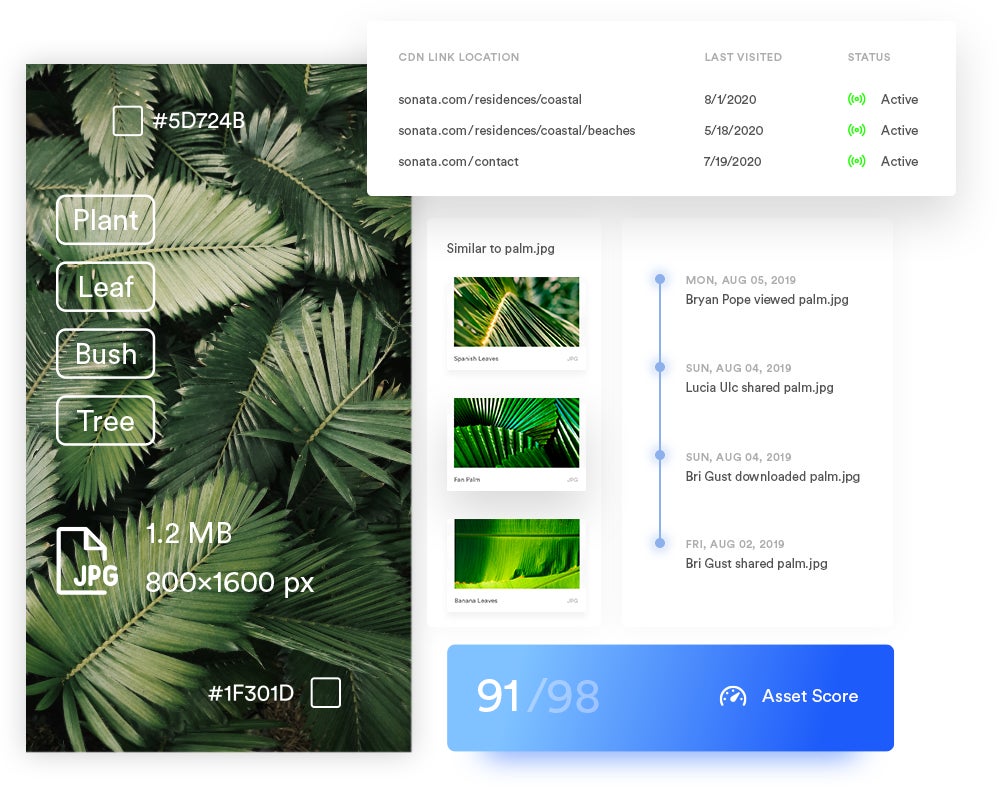
**Brandfolder integrations and open-source API:** Brandfolder has over 30 native integrations and an open-source API so you can connect the DAM with other tools in your tech stack and run the software in sync. Integrating your DAM with other software, like content management systems, content creation apps, marketing tools, eCommerce platforms, etc. lets you access DAM files in those other applications and consolidate reporting information.
You can also learn more about our DAM features here.
Feedback from Customer Reviews
Brandfolder is rated **4.5 stars on G2** and **4.7 stars on Capterra**. When we look at the breakdown of user reviews, we see Brandfolder rates:
- 9.1 for Ease of Use — in comparison to Adobe’s 7.2 rating
- 9.2 for Quality of Support — in comparison to Adobe’s 7.1 rating
- 8.6 for Ease of Setup — in comparison to Adobe’s 6.5 rating
Pros
- Brandfolder supports virtually all file types so teams can use it as a hub to store all brand assets and digital files.
- The search feature makes it easy to retrieve files and you don’t have to remember exactly where content is stored or rely on file names.
- Brandfolder’s UI is simple and intuitive so teams can learn the software without much training.
- Online sharing features let you monitor files once they’re sent — you can see active share links, track when end-users view and download content, add or remove assets from share links and expire share links.
Cons
- Organizing assets with Collections, Sections, Labels, and Pins can be confusing at first, but you can request help from the Brandfolder team when mapping out your asset library.
- Brand Intelligence, Brandfolder’s AI, sometimes adds extraneous tags and requires feedback to learn your tagging preferences and add more specific metadata information.
- Brandfolder doesn’t offer mobile apps, so if you want to access DAM content while on the go, you have to log in through your phone’s web browser.
- Some integrations are more limited than others.
Here’s a look at some recent customer reviews of Brandfolder:
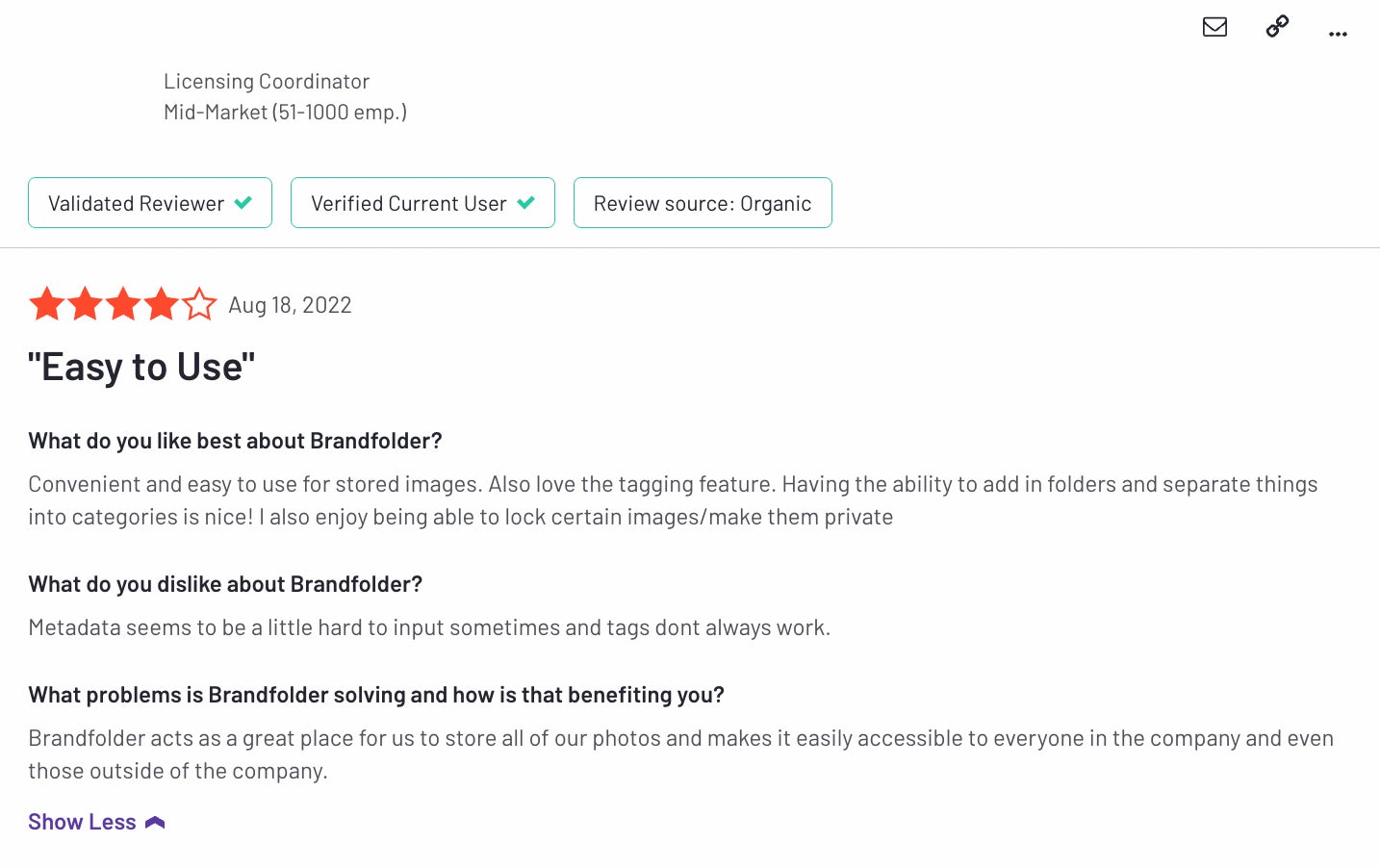
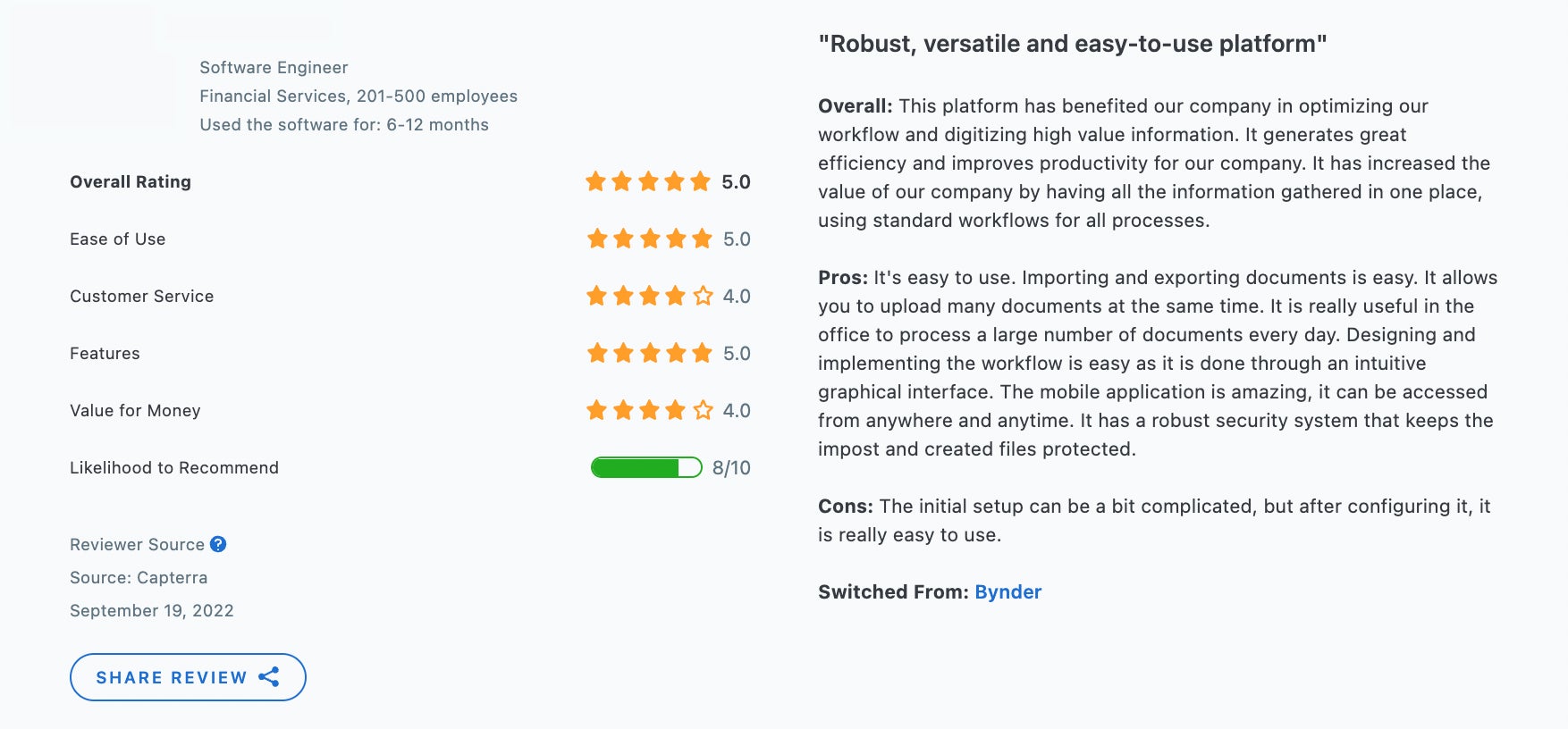
Get Started with the Best DAM Software for Your Business
In summary…
Adobe AEM, while not suited for all businesses, appeals to large-scale creative and marketing agencies that are already power users of Adobe and need DAM software to support internal processes (i.e., make files accessible, manage content creation and enable team collaboration). It’s not the best for small businesses or teams that need greater flexibility with set-up, integrations or pricing.
On the other hand, Brandfolder is a more flexible DAM solution that can support a wider variety of teams — we help you set up Brandfolder to fit your current needs and then adjust the software as you go. It’s a scalable solution that evolves with your business.
On the fence? We’re here to help. Get in touch with our team for a free consultation and demo of Brandfolder.
Related read: How to Find the Best Digital Asset Management Tool for Your Teams
